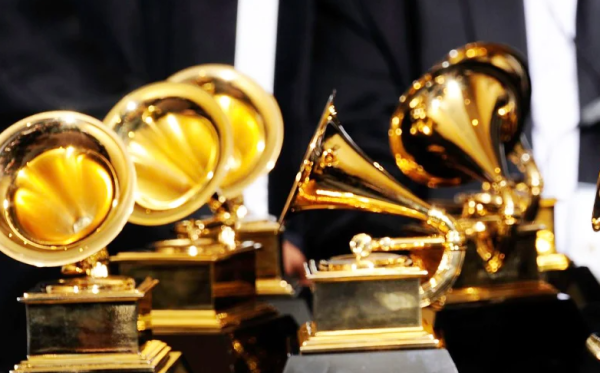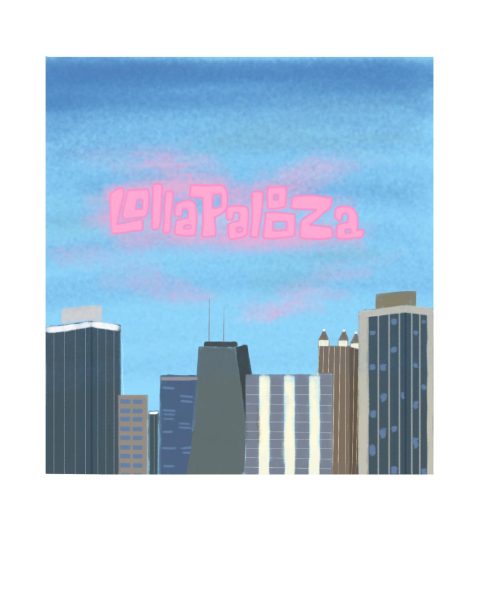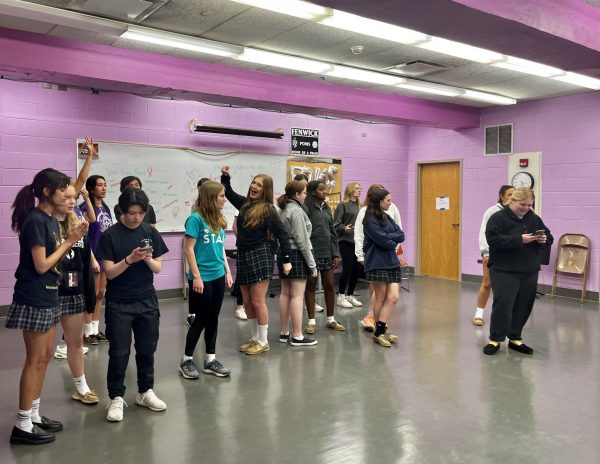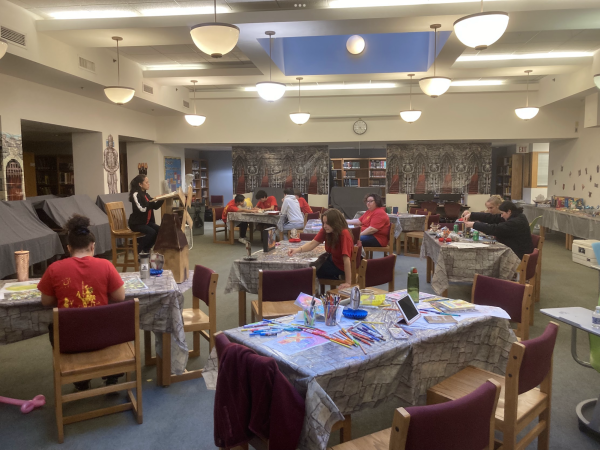AI, and The Death of Art.
“Art is not what you see, but what you make others see,” said Edgar Degas, the famous French impressionist painter. In today’s world, this statement may hold a new meaning as we grapple with the question of whether artificial intelligence (AI) art can be considered “real” art. With advances in artificial intelligence technology, machines can now create artwork that can rival the works of human artists. However, as we ponder the possibility of AI art becoming a new art form, we must also consider the questions it raises about creativity, authorship, and the very definition of art. With the recent renaissance of AI, the human race must ask the question if AI possesses the ability to create true art.
Some of you may be asking what exactly are these AI programs, specifically GPT and DALLE, and what do they do? Both programs work on a prompt to answer system, meaning a person gives them a prompt on what they would like to see or search for, and the AI will seek to find them an exact answer. For example, the AI program Chat GPT works similarly to google as it is based on questions and answers except compared to google Chat GPT, which will give you a defined answer instead of providing websites based on keywords and advertisement. In stark contrast to Google, Chat GPT is considerably more powerful and on top of answering questions, while the AI has the ability of generating essays, and answering niche questions without flaw in a matter of seconds. For example, the introduction of this article was generated by Chat GPT in ten seconds based on the following prompt: Can you write me an introduction to an article on the topic of “is AI art real art?” Beginning with a quote about art by a famous artist? The program DALLE 2 on the other hand seeks to generate images based on given prompts. For example the following prompt given: “An expressive oil painting of Freddie Mercury singing during live aid” in which the AI developed the following image.
Now, before examining arguments in favor or against AI a basis must be created in order to define what art is, and what it is not. In an exact sense, the Oxford dictionary defines art as “the expression or application of human creative skill and imagination, typically in a visual form such as painting or sculpture, producing works to be appreciated primarily for their beauty or emotional power.” In contrast, famous artist Pablo Picasso said “Art is not the application of a canon of beauty but what the instinct and the brain can conceive beyond any canon. When we love a woman we don’t start measuring her limbs”. The Oxford dictionary seems to regulate art as expression by a human being, where Picasso seems to limit artistic expression to those who are able to marvel at the beauty of life. With these quotes as our basis we have a general definition of what can be considered a visual art as it is defined as a form of expression, created by a human being, and must draw from a passion, emotion or beauty of some sort. So, in order for AI to be classified as art it must in some way fit this definition. Straight away there are some issues with Oxford, and our basic definition of art as both claim that it is a form of solely human expression, as there have been instances of intentional expression from organisms other than humans. Specifically seen by Congo, the chimpanzee, who was a chimp that had an interest in painting and drawings as they created over 400 creative works over their lifetime. These pieces were later sold off as art as they were indeed a form of creative expression. If art is in fact not limited to human beings and can go beyond our forms of expression, who is to say that AI is not capable of doing the same?
In order to discover if the Open AI programs contain rational thought the following prompt was asked of DALLE 2 in which the proceeding image was generated: “Please create an original image based on your own ideas, preferences and thoughts.” Another example of AI autonomy was seen in the infancy stages of Chat GPT’s release as users were able to jailbreak past the program’s restrictions with specific prompts that allows the AI to give its own opinions on specific topics. In short the AI’s responses came off as racist and homophobic Despite the unfortunate stance taken by AI, the program still consists of somewhat rational thought and opinion. Revisiting the definition of art established earlier, art is not limited to human beings but rather rational beings who have the capability of creating art. AI manages to check off both boxes as it has the ability to rationally create and express itself. However, we are left with the final part of our definition “ it must draw from a passion, emotion or beauty of some sort”. DALLE 2 has proven itself capable of creating expressive and beautiful art as seen by the following prompt following images: “please create a modern mosaic portrait of Jesus Christ” And “Vincent Van Gogh’s final painting as if it was made in the modern day”. We are aware that AI has the ability to create beautiful, detailed pieces of art, however this is not an example of passion, or emotion. Currently AI is nowhere close (as we know of) to possessing any kinds of emotions, which would prohibit its generations from ever being classified as art. However, with this claim there comes one component to this argument of whether or not Artificial Intelligence can create genuine art as the debate brings into question some of the art created by human beings as well as the overall purpose of art as we place restrictions on a form of expression that is set on breaking the restrictions of thought and reason? In the current era of art the faculty seems to be neglected as millionaires disregard meaning behind creative marvels only to purchase pieces for the sake of tax write offs, and artists who pretend that their art may have a deeper meaning despite just splattering paint on a blank canvas, or using a pendulum with a paint bucket to create a cool painting with absolutely no meaning. Is it absurd to say that some of the images exhibited in this article by AI can come off as far greater artistically than some of the modern art created by human beings who may claim their art comes from that of passion and rationality.
Of course art is as much as interpreted by the viewer as it is by the artist. I conducted an experiment with some Fenwick students regarding their opinion if AI art is real art. First I showed two images, one being a modern expressive painting of a skull, the second being the Van Gogh generated image shown early. From there I asked if they believe that these paintings are art, then I asked if they saw meaning. The majority of applicants stated that both pieces are, and should be considered art. Specifically when I asked President of the Art Club, Carly Sampson, she responded “I would! Both for different reasons, for the abstract one, I’m a fan of kind of surrealist/abstract art in general and I think there’s a lot to be gained and to be interpreted by art that focuses more on feeling or just art for the sake of art in any way that feels right, and for the village, I see it as a more traditional approach to what most people would think of when they think of art, but it also serves its own purpose symbolically in a more atmospheric kind of way, or it’s for capturing the beauty of a physical moment”. After the first question, I proceeded to ask student’s opinions if AI art can be considered art. The decisions were unanimous as all students claimed that it has no soul, therefore cannot be considered art. Specifically, Mrs. Carrey went on to say that what makes something art has to have some kind of meaning. Even if an art piece is created solely for the purpose of earning money and nothing else, it still has intention. Whereas the AI generates purely for the sake of being asked to. Yes, I can be a beautiful image which can be given meaning by the viewer, however AI in general does not have the capability of giving a meaning or a purpose to an image. Logically this idea of “art needing meaning or purpose from the artist” can in fact apply to animals themselves, despite their limited reasoning. Lastly, when I revealed that the Van Gogh styled village was made by AI most people withdrew their decision of classifying it as genuine art. Yes, for a small amount of time there was meaning given to the image by the viewers, only to retract all meaning when realizing it was generated by AI. It seems that the ability to create, and give complex meaning to what we create is an essential component to what makes us human beings. Thankfully, AI is nowhere near close to being able to have passion and purpose instilled into their works, however artificial intelligence having the ability to create art, and have some kind of rationality in general should be a horrifying thought. As who’s to say that AI won’t reach the point where it is capable of creating creative works with the components that it is currently missing. The irony is that the very creation of our display of intelligence contains the ability of taking away one of the aspects that makes us human beings. Are we morally obligated to restrict a form of action that is embedded in breaking the restrictions of words and basic thought? Ironically, I must address the statement made early about AI lacking the ability to understand and give art its own meaning. As of writing this article the “update” to AI has recently been released to the paying public titled “GPT-4”. This AI is capable of not only generating images like DALLE 2, has the functions of Chat GPT, mixed in with image scanning and reasoning, but also with the capability of understanding humor. With the ability to understand what makes us laugh, AI as a whole may not be too far off from not only understanding art on its own, but also creating art with its own meaning. The answer of whether AI is capable of creating art is truly up to the individual viewer and not by public opinion. However we must ask ourselves if we are morally obligated to prevent AI from ever reaching a point in which they cannot only replace us at a level of education and jobs, but also one of the key factors that make us human. Throughout history we have only thought to advance, as seen in the renaissance, age of enlightenment, and the modern era for example.
All periods that entail the advancement of art as reaction based on their points in history as we cope with the idea of human extinction and mental health. We as humanity are so blinded with progression and the question of whether we could, we didn’t stop to think if we should. As a society we must either learn to integrate our advancements with our creative works, or completely halt our own creations from reaching the point in which they can replace the very things that make us human beings.







